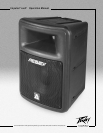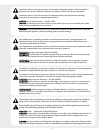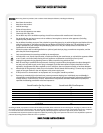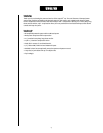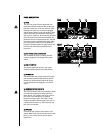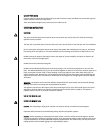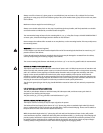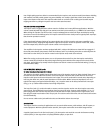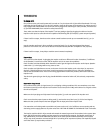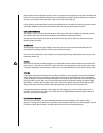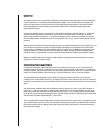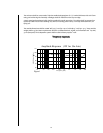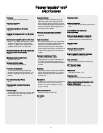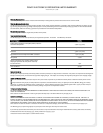
9
TTRROOUUBBLLEESSHHOOOOTTIINNGG
NNoo OOuuttppuutt aatt AAllll
First, make sure the unit has AC power and is turned on. If so, the Power LED (4) should be illuminated. If it is not,
check that the On-Off switch (3) is in the “On” position, check the IEC power cord connection (2), making sure it is
fully engaged and seated. Make sure the AC line cord is plugged into a working AC outlet, and last, check the fuse
(2) {see the REAR PANEL/Fuse section for safety instructions}.
Then, make sure that the inputs of the Impulse
®
100P are getting a signal by plugging the cable run into the
Impulse 100P’s inputs to some other device capable of determining this (for example, a power amp and speaker).
If there is still no output, then be sure the volume control has been turned up to a reasonable level (1/3 to 1/2
way).
Has the Impulse 100P been in direct sunlight or excessive heat? If so, it may have triggered the thermal
protection. Turn off the unit, and cool as best as the situation allows (DO NOT use liquids for this purpose!)
If there is still no output, it may help to read the owner’s manual completely.
HHuumm oorr BBuuzzzz
This can be AC outlet related. Try plugging the Impulse 100P into a different AC outlet. Sometimes, if a different
circuit (breaker) is used for the mixer and the Impulse 100P, it can cause hum problems.
Check to make sure that shielded cables have been used to get the signal to the Impulse 100P’s inputs. Speaker
cables with 1/4" or XLR plugs will be very prone to hum.
Check to make sure light dimmers are not on the same circuit as the Impulse 100P or the mixer (or any source
devices). If light dimmers are in use, then it may be necessary to turn them full on or fully off to eliminate or
reduce hum to tolerable levels. This is an AC wiring/light dimmer interference problem, and not the fault of the
Impulse 100P.
The third wire ground plug on the AC plug should NEVER be removed or broken off, this seriously compromises
safety.
DDiissttoorrtteedd oorr FFuuzzzzyy SSoouunndd
First, make sure the mixer (or signal source) is not clipping or being overdriven. This can sometimes occur when
the volume control (6) on the Impulse 100P has been set too low (too far CCW), and it takes a lot of signal to drive
the unit to full power.
Make sure the input plugs are fully seated in the input jacks (5) on the rear panel of the Impulse 100P.
Check to see that the proper inputs are being used (5), and not the Loop Thru input (7), for line level signals.
Make sure that a power amp has not been plugged into the input jacks of the Impulse 100P.
If an extension cord is being used to provide the AC power to the unit, is it of sufficient current capacity and not
also being used to supply power to any other units? See “GETTING AC POWER TO THE IMPULSE 100P” for details.
The Impulse 100P has built-in EQ to extend and smooth the natural response of the speakers in the system. Bass
boost and HF EQ have been applied, and the system has a nominally flat response, and should require little, if
any, additional EQ. If excessive additional bass boost or HF boost have been added externally to the Impulse
100P, it may cause premature overload at high SPLs. Try backing off of any external (mixer, rack equalizer) EQ and
see if that clears up any tendency to distort.



